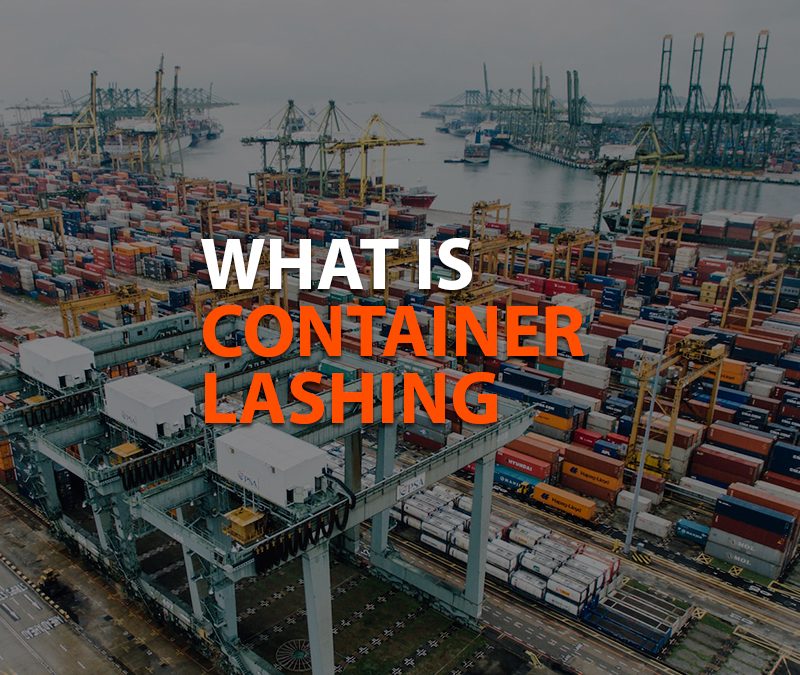Shipping goods across the ocean is a vital part of global trade. Cargo containers are an efficient way to transport large quantities of goods, but they must be secured with properly lashing equipment to prevent damage or loss during transport.
What is Container Lashing?
Container lashing is the process of securing cargo containers to the ship’s deck using a system of ropes, cables, and chains. This system, also known as a lashing system, is designed to prevent the containers from shifting or tipping over during rough seas, which could cause damage to the ship or other containers.
The lashing system consists of a series of lashing points on the ship’s deck and corresponding lashing rods, twistlocks, and turnbuckles on the containers themselves. The lashing rods are threaded through the container’s corner castings and secured to the lashing points on the ship’s deck, while the twistlocks and turnbuckles tighten the system and provide additional stability

Container lashing is a critical component of safe and efficient shipping. If not done properly, containers can break free from their moorings and cause serious damage to the ship, to other cargo or even to people. For this reason, container lashing is subject to strict regulations and standards set by international organizations such as the International Maritime Organization (IMO) and the International Organization for Standardization (ISO).
Safe advice for container lashing operations:
Lashing container operations are crucial for the safe and efficient transport of cargo containers. These operations involve securing containers to the ship’s deck during loading and unloading, and removing the lashings once the containers are in place. Here are some safe advice for lashing container operations:
-Ensure that all personnel involved in the operation are properly trained and certified to carry out these tasks. Lashing and de-lashing can be dangerous if not done correctly, so it’s important to have experienced personnel who know how to handle the equipment and follow safety procedures.
-Use appropriate personal protective equipment (PPE) such as safety helmets, gloves, and safety shoes. PPE can protect workers from potential hazards such as falling objects or injuries from equipment.
-Before beginning any lashing or de-lashing operation, check that all equipment is in good condition and functioning properly. This includes lashing rods, twistlocks, turnbuckles, and any other tools or equipment used in the operation.
-Follow the manufacturer’s instructions for proper use and maintenance of equipment. Improper use or maintenance can result in equipment failure or malfunction, which can lead to accidents or injuries.
-Always use the correct number and size of lashings for each container. Using insufficient lashings or improper placement can result in shifting or tipping of containers during transport.
-Check the weather and sea conditions before beginning any lashing or de-lashing operation. High winds or rough seas can make the operation more dangerous and increase the risk of accidents or injuries.
-Communicate clearly and effectively with other personnel involved in the operation, including the crane operator and ship’s crew. Proper communication can help prevent accidents and ensure that the operation runs smoothly.
By following these safe advice for lashing and de-lashing operations, you can help ensure that cargo containers are securely and safely transported across the ocean.
Conclusion
Without proper lashing and lashing equipment, cargo containers can shift or tip over during rough seas, potentially causing damage to the ship or other containers, and posing a risk to the safety of crew members and other personnel involved in the operation. By ensuring that containers are properly secured using a lashing system consisting of ropes, cables, and chains, shipping companies can help prevent accidents and ensure that goods are delivered to their destination in a timely and safe manner. Container lashing is subject to strict regulations and standards set by international organizations, highlighting the importance of proper training, equipment, and procedures in these operations. Overall, container lashing plays a vital role in the global trade industry, helping to ensure the safe and efficient transport of goods across the ocean.





